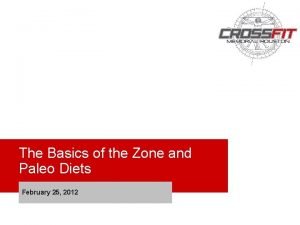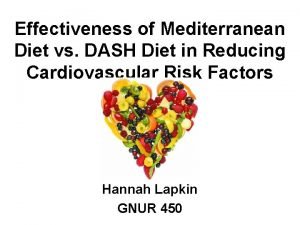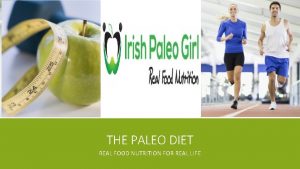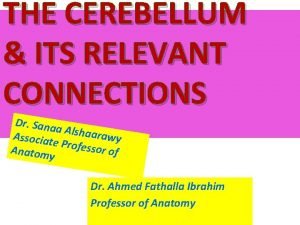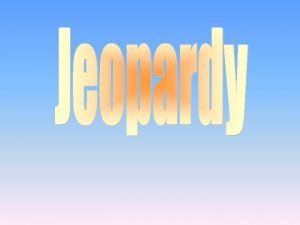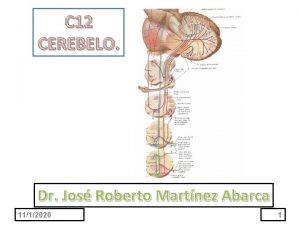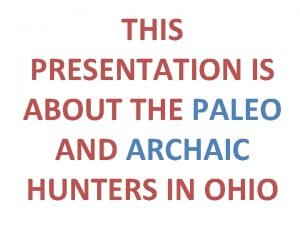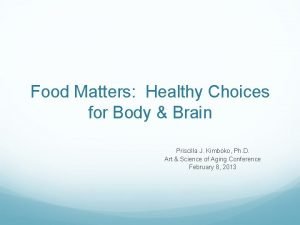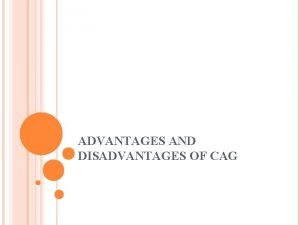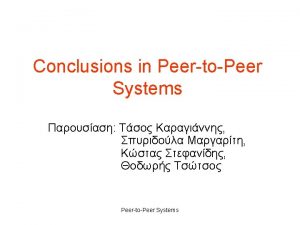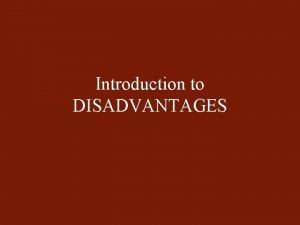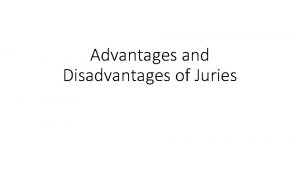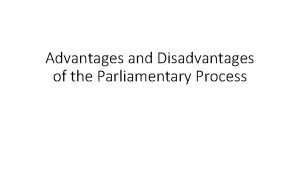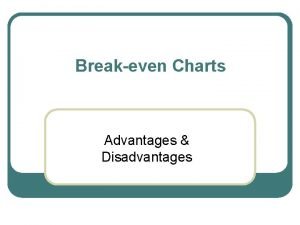Review of the Paleo Diet Advantages and Disadvantages












- Slides: 12

Review of the Paleo Diet: Advantages and Disadvantages By Michaela M. Phillips

Introduction • Paleolithic hunter gatherer societies’ eating habits • Examined through bone studies, gut size, foraging data, enzyme activity and other anthropological means • Food allowed in the Paleo diet includes meat, fish, shellfish, fruits, vegetables, tubers, eggs and nuts • Excludes grains, legumes, dairy, salt, sugar and refined fats • Major proponent: L. Cordain from the Health and Fitness department, University of Colorado • Major Publication: Original Communications-The paradoxical nature of hunter-gatherer diets: Meat-based, yet nonatherogenic

U. S. News and World Report Paleo Diet Recommended Women Men 21 -40: 2, 400 41 -60: 2, 200 61+: 2, 000 Calories 2, 200 21 -25: 2, 000 26 -50: 1, 800 51+: 1, 600 Total Fat 39% 20%-35% Saturated 7% Less than 10% Trans 0% N/A Total Carbohydrates 23% 45%-65% Sugars (total except as noted) N/A

U. S. News and World Report Paleo Diet Recommended Women Men 42. 5 g. 19 -30: 28 g. 31 -50: 25 g. 51+: 22 g. 19 -30: 34 g. 31 -50: 31 g. 51+: 28 g. Protein 38% 10%-35% Sodium 726 mg. Under 2, 300 mg. , under 1, 500 mg. for 51+ Potassium 9, 062 mg. At least 4, 700 mg. Calcium 691 mg. 19 -50: 1, 000 mg. 51+: 1, 200 mg. Vitamin B-12 17. 6 mcg. 2. 4 mcg. Vitamin D 0 mcg. 15 mcg. Fiber

Benefits Higher consumption of fruits and vegetables Increased satiety Improved blood glucose Improved lipid profiles Reduced homocysteine levels Lack of evidence of osteoporosis in huntergatherer societies • Reduced hypertension • • •

Disadvantages • • • Increased consumption of protein Increased fat in the diet Exclusion of grains and legumes Exclusion of dairy Sustainability

Increased Protein • 38% compared to 10 -35% recommended • Cordain – Improves blood lipid profile • Medical evidence: Too much protein can overload the kidneys

Increased Fat • 39% compared to the 35% recommended • Cordain claims the type of fat consumed has more unsaturated fat • Farmed animals may contain more saturated fat http: //esciencenews. com/articles/2012/11/14/pig. genome. offers. insights. feistiest. farm. animals

Exclusion of Grains and Legumes • Björck et Al. (2012), in the HEALTHGRAIN project – Consumption of whole grains was protective against cardiovascular disease and type 2 diabetes – Evidence was not consistent with regard to weight loss and measures of adiposity • Venn et Al. (2004) – Consuming about 3 servings a day of whole grains could decrease risk of type 2 diabetes by 20 -30% – Grains are protective against type 2 diabetes and CVD – Grains are less effective in weight loss

Exclusion of Dairy • Österdahl et Al. (2007) – Lower intake of calcium in three week study of people on the Paleo diet • Cordain cited lack of evidence of osteoporosis in hunter-gatherer societies suggests that this population was sufficient in calcium intake

Sustainability • Consumption of large amounts of animal product increases carbon footprint • Patient centered care – some clients may not be successful eliminating certain foods

Conclusion • In practice, the diet is not sustainable for everyone • For those within normal weight range: Mediterranean diet that includes grains and legumes is preferrable • For obese population – Short term use for weight loss, if feasible and sustainable for the client
